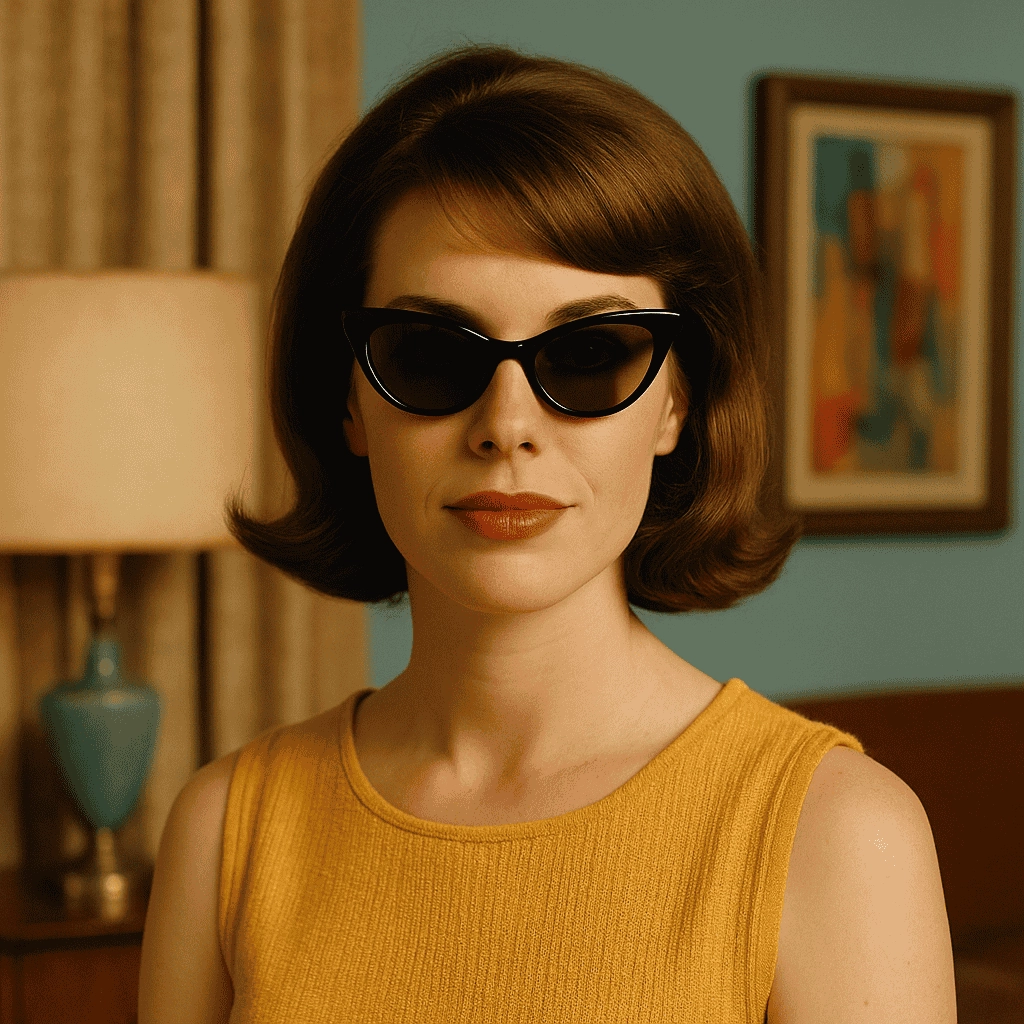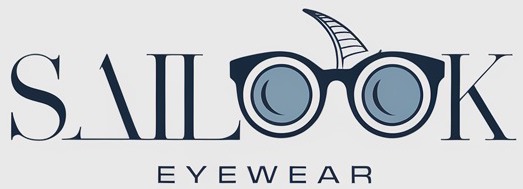You’ve wondered which sunglass shapes defined a transformative decade. You need clear insight into iconic styles of the 1960s and their cultural impact. You want reliable details drawn from fashion archives, film history, and materials science. Here’s the deal this guide delivers concise answers, vivid examples, and expert context every B2B buyer and designer can trust.

1. What styles defined 1960s sunglasses?
Cat-eye frames and their rise
Cat-eye lenses flared upward at temples. They offered a dramatic lift for feminine silhouettes in mid-century fashion. Hollywood stars adopted them on screen and off. Designers cut acetate sheets into bold shapes that hugged cheekbones.
Oversized round shapes
Oversized rounds expanded personal expression during the late ’60s. Think John Lennon’s mirrored lenses that offered mystique plus near-360° coverage. Manufacturers crafted thin metal rims and lightweight hinges that suited avant-garde trends.
Thin metal and wire rims
Wire-thin frames emerged alongside minimalism movements. Titanium and stainless steel allowed delicate contours without bulk. They paired easily with gradient lenses and mirrored coatings. Manufacturers marketed them as unisex options for practical elegance.
But here’s the kicker… these three form factors dominated both street style and runway looks.
| Style | Key Characteristics | Popular Wearers |
|---|---|---|
| Cat-eye | Flared temple tips, thick acetate | Film divas, editors |
| Oversized round | Large circular lenses, metal rims | Rock stars, hippies |
| Thin metal/wire rims | Slim profile, stainless frames | Architects, minimalists |
2. Why did Wayfarers soar in the decade?
Film and music icon endorsements
Wayfarers appeared in movies from Breakfast at Tiffany’s through Smokey and the Bandit. Ready for the good part? Musicians from Bob Dylan to The Beatles adopted them on album covers. Their cool-factor translated directly into commercial demand.
Street-style adoption
Urban youth embraced Wayfarers as a statement piece. Retailers stocked them in neon window displays beside vinyl records. Photographers captured them on sidewalks in Greenwich Village and Carnaby Street.
Durable acetate construction
Injection-molded Mazzucchelli acetate resisted warping under hot summer sun. Its variegated tortoiseshell patterns looked premium at scale. Quality control standards ensured uniform finish across thousands of frames.
| Feature | Benefit | Outcome |
|---|---|---|
| Acetate durability | Heat resistance, flexibility | Longer lifespan |
| Celebrity sightings | High visibility | Elevated demand |
| Urban street adoption | Grassroots trend growth | Mass appeal |
3. How did aviators evolve during the decade?
Military to civilian transition
What’s the real story? Aviators originated in military squadrons but migrated into mainstream fashion by 1962. Civilian models swapped polarization for stylish mirror-coated lenses.
Lens colour and tint trends
Lenses shifted from olive drab to amber, blue, and pastel gradients. Manufacturers experimented with mirror finishes that reflected photochemical innovations.
Branding by major manufacturers
Ray-Ban and Persol stamped temple arms with model numbers and insignia. Limited-run colorways carried factory batch codes for authenticity.
| Evolution Stage | Characteristic Change | Impact |
|---|---|---|
| Military issue | Functional olive lenses | Low public awareness |
| Early civilian | Gradient and mirror tints | Growing fashion use |
| Branded editions | Logo‐etched arms | Collector interest |
4. What materials were popular for frames?
Mazzucchelli acetate sheets
Acetate provided color depth and easy machining. Patterns ranged from tortoiseshell to pastel block hues.
Stainless steel and nickel alloys
Metal frames offered thin profiles plus sturdy hinge mounts. Coastal climates tested corrosion resistance under UV exposure.
Emerging plastic composites
Early injected plastics delivered new shape flexibility at lower cost. They proved experimental and less durable than acetate.
But here’s the kicker… material choice influenced both price tier and perceived quality.
| Material | Advantages | Trade-offs |
|---|---|---|
| Acetate | Rich patterns, flexible machining | Moderate cost |
| Stainless steel | Slim, strong | Prone to tarnish |
| Early plastics | Low cost, shape variety | Limited longevity |
5. How did lens technology advance in the era?
UV-blocking coatings introduction
Manufacturers added thin film layers that filtered harmful rays. Certification stickers on lenses built buyer confidence.
Mirror and gradient tints
This is where it gets interesting… layered sputtering techniques created reflective surfaces, offering glare reduction plus style.
Polarized lens experiments
Early labs tested polarized filters but mass adoption lagged until late ’60s due to production costs.
| Lens Type | Function | First Uses |
|---|---|---|
| UV-blocking | Health protection | Outdoor sports |
| Mirror tint | Glare reduction | Military pilots |
| Gradient tint | Fashion with functionality | Film premieres |
6. Who were the key designers and brands?
Ray-Ban and Persol innovations
Ray-Ban introduced gradient Aviators while Persol patented Meflecto spring hinges in 1964.
European ateliers and craftsmanship
Small Milanese studios hand-polished acetate edges and engraved logos by laser.
Boutique brands in London and Milan
Independent designers launched limited-edition runs sold via mail order. They branded temple arms in foil stamps.
What’s the real story? these pioneers set quality benchmarks that endure today.
| Brand | Signature Innovation | Year of Launch |
|---|---|---|
| Ray-Ban | Gradient Aviator lenses | 1961 |
| Persol | Meflecto flexible hinges | 1964 |
| London boutique | Hand-polished acetate | 1967 |
7. How did pop culture shape sunglass trends?
Film stars and red-carpet moments
Audiences saw Audrey Hepburn’s oversized frames in promotional stills for Breakfast at Tiffany’s.
Music festivals and counterculture
Woodstock attendees sported mirrored round lenses as symbols of freedom.
Television series and advertising
Prime time shows featured lead actors wearing trendsetting frames during key scenes.\
Ready for the good part? advertisers paid top dollar for product placements on popular programs.
| Influence Channel | Impact on Demand | Notable Example |
|---|---|---|
| Cinema | Instant style icons | Breakfast at Tiffany’s |
| Music festivals | Youth adoption | Woodstock |
| Television | Household recognition | The Avengers show |
8. What colours and patterns dominated?
Tortoiseshell and solid black
Classic combos offered versatility for multiple outfits.
Bold pastels and two-tone combos
Mint green, powder pink, lemon yellow blends hit beach scenes.
Floral and geometric prints
Acetate lamination allowed intricate graphic patterns embedded in frames.
But here’s the kicker… pattern choice often signaled brand tier and price point.
| Colour/Pattern | Typical Price Tier | Fashion Context |
|---|---|---|
| Tortoiseshell | Mid-high | Everyday wear |
| Solid black | All tiers | Formal occasions |
| Pastels | High | Resort collections |
9. How did gender influence sunglass design?
Feminine flair versus masculine minimalism
Women’s frames sported curves and ornate temple details. Men’s offered straight lines and muted shades.
Unisex models and androgynous looks
Street-wear brands blurred lines with neutral silhouettes and oversized volumes.
Marketing strategies by gender
Print ads targeted female readers with beauty-focused language while male customers saw rugged lifestyle imagery.
What’s the real story? gendered targeting built distinct market segments for decades.
| Segment | Design Traits | Advertising Angle |
|---|---|---|
| Women | Curves, ornamentation | Beauty enhancement |
| Men | Straight lines, muted shades | Adventure lifestyle |
| Unisex | Oversized, neutral tones | Inclusive appeal |
10. What price ranges existed in the market?
High-end luxury labels
Top luxury editions cost equivalent of two weeks’ salary in 1965. They featured 18k gold plating on hinges.
Mid-tier department store lines
Mid-range models priced affordably for middle-class buyers. They offered reliable UV protection without heavy branding.
Affordable mass-market options
Lower-cost injected plastics sold through catalogues and pharmacies. Quality varied widely.
But here’s the kicker… price tier influenced material choice, branding strategy, and long-term resale value.
| Tier | Price in 1965 USD | Typical Features |
|---|---|---|
| Luxury | $75–$150 | Gold plating, designer logos |
| Mid-tier | $25–$50 | Branded acetate, UV coating |
| Mass market | <$25 | Basic plastics, limited tints |
11. How did retailers and distribution work?
Specialty optical shops
Opticians offered custom fit services and prescription lens inserts.
Department stores and mail order
Catalogues featured seasonal collections; customers mailed order forms.
Early catalogue sales
Brands like Sears and Montgomery Ward included sunglass inserts in summer catalogues.\
This is where it gets interesting… direct mail boosted rural market access significantly.
| Channel | Reach | Order Process |
|---|---|---|
| Optical shops | Local markets | In-store fitting |
| Department stores | Urban centers | Instant purchase |
| Mail order catalogues | Nationwide | Mail-in form |
12. What packaging and branding was used?
Hard cases and microfiber pouches
Protective cases bore gold-foil logos and felt lining.
Logo placement on temples
Temples displayed brand names in gold foil or engraved etching.
Printed instruction leaflets
Leaflets detailed care tips and warranty terms.\
Ready for the good part? premium packaging added perceived value at point of sale.
| Packaging Element | Material | Branding Detail |
|---|---|---|
| Hard case | Leatherette, foam lining | Foil-stamped logos |
| Microfiber pouch | Suede-like fabric | Embossed brand name |
| Instruction leaflet | Glossy paper | Care instructions |
13. How do vintage 60s frames perform today?
Durability after decades
Many acetate frames remain resilient if stored away from direct heat.
Restoration and repair tips
Lube hinges with micro-oil, polish scratches with fine-grain compounds.
Authenticity versus repro lines
Collectors seek original factory stamps; repros lack period correct hardware.
But here’s the kicker… knowing restoration limits prevents accidental damage.
| Condition | Restoration Action | Risk Level |
|---|---|---|
| Scratched lenses | Fine polish | Low |
| Loose hinges | Micro-oil lubrication | Medium |
| Faded acetate | Acetate dye refill | High |
14. Where can collectors source originals?
Estate sales and auctions
Mid-century estates yield hidden gems at estate auctions.
Online marketplaces
eBay and Etsy host global listings; verify seller feedback.
Specialist vintage dealers
Niche shops authenticate frames; offer limited warranties.
This is where it gets interesting… dealer networks often trade rare models off-market.
| Source | Verification Method | Price Range |
|---|---|---|
| Estate auctions | Auction house certificates | Variable |
| Online marketplaces | Seller ratings, serial checks | $50–$500 |
| Vintage dealers | Expert appraisal | $100–$1000 |
15. How to style 1960s sunglasses in modern outfits?
Pairing with tailored suits
Aviators add edge to slim-fit suits; choose amber gradient lenses.
Casual weekend ensembles
Oversized rounds match denim jackets and linen tees.
Accessorising for events
Cat-eyes complement dresses and formal wear; coordinate with gold jewelry.
Ready for the good part? mixing vintage and modern elevates any look effortlessly.
| Outfit Style | Sunglass Model | Styling Tip |
|---|---|---|
| Tailored suit | Aviator gradient | Match metal accents |
| Casual denim | Round mirrored | Contrast textures |
| Formal dress | Cat-eye acetate | Coordinate jewelry |
Conclusion
1960s sunglasses fused bold shapes, advanced materials, and cultural momentum into designs that endure. You’ve learned about iconic frames, material innovations, lens technology, market tiers, and styling tips. Here’s the deal revisit this guide when sourcing vintage or crafting retro-inspired collections. Reach out for deeper archives or expert appraisals.
FAQ
Q1: What are 1960s vintage sunglasses?
1960s vintage sunglasses refer to frames and lenses made during that era showcasing unique shapes, materials, and cultural influences from film and music scenes.
Q2: How did acetate frames change in that decade?
They offered vibrant colors and patterns plus durability far beyond early plastics, thanks to Mazzucchelli sheet technology.
Q3: Where can I verify authenticity of a 1960s pair?
Inspect temple stamps, hinge types, and consult certified vintage eyewear reference guides or appraisers.
Q4: Are modern reproductions true to original designs?
Repros mimic shape and tints closely but often use lower-grade materials and non-period correct hardware.
Q5: What maintenance do original frames require?
Regular hinge lubrication, gentle acetate polish, lens-safe cleaning and structured storage in protective cases.

